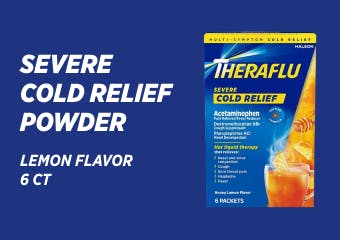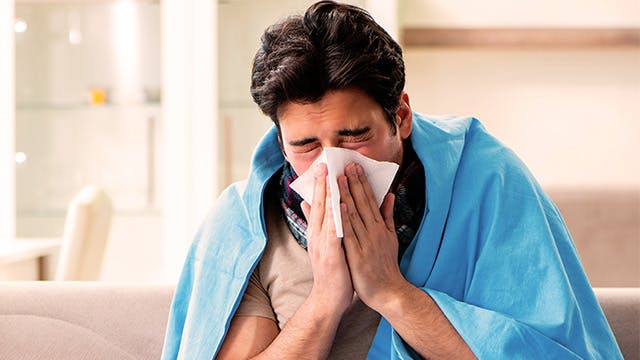Read on to get some tips on how to avoid getting the flu from family members when you all live under the same roof.
- Learn how to recognize flu symptoms. First things first: if you don’t know what the flu looks like, how can you protect your family from it? If you or a family member is experiencing fever, chills, a runny or stuffy nose, a cough, muscle aches and pains, fatigue, or a sore throat, this may be a sign of the flu.1 Whether you’re trying to protect your family against the flu or another contagious illness, know that it’s important to start taking the necessary precautions when the first symptoms present themselves. If you are unsure whether or not someone in your family has the flu or another illness, contact your healthcare provider to get a flu test.
- Keep your hands clean. After identifying flu symptoms in yourself or in another family member, the easiest thing to do—and to have everyone else in your household do—is to wash your hands frequently. Because the flu is spread via coughing, sneezing, and speaking, germs can land on a number of surfaces. When you touch the surfaces germ-covered surface and then touch your own eyes, nose, or mouth, the flu germs may enter your body.1 Frequent hand washing to clean off the flu germs can help prevent spreading the virus. When you wash your hands, be sure to use warm, soapy water and scrub for at least 20 seconds. In a pinch, you can also use an alcohol-based hand sanitizer.1
- Keep the surfaces in your home clean and disinfected. Since flu germs can be spread via surfaces, it’s also important to frequently clean and disinfect the shared surfaces in your home to kill the germs and help stop the spread of the virus. You probably already clean shared surfaces to remove grime and dirt, but when someone in your household has the flu, it’s important to disinfect them as well. These shared surfaces include countertops, light switches, door knobs, toys, the family computer, TV remotes, the refrigerator door—anything that is touched by multiple family members on a day-to-day basis.
Wondering if your household cleaner is strong enough to do the trick? Check the label for claims saying that the cleaner kills influenza viruses.1 - Don’t forget about soft surfaces. At the same time that you’re wiping your kitchen countertop and other hard shared surfaces, it’s also important to remember the shared soft surfaces in your home—like towels. Launder towels after one use or, temporarily, use paper towels that can be thrown away.1
- Avoid touching your face. In a shared household, contaminating some shared surfaces—both soft and hard—is unavoidable. Because it’s not realistic to disinfect everything all the time, you can avoid spreading germs from surfaces into your body by not touching your eyes, nose, or mouth with dirty hands.1 Remind your kids to do the same!
- Keep a distance. If it’s possible, give the sick person their own room where they can keep a distance from other family members. Keeping the sick person’s belongings separate from the rest of the family’s things is another helpful way to prevent the spread of germs via shared surfaces!
Though it may seem impossible to avoid getting the flu when someone in your family is sick, now you know that there are plenty of things you can do to protect yourself and your family. For more tips and resources on health and wellness, visit the Theraflu Power Living center.





